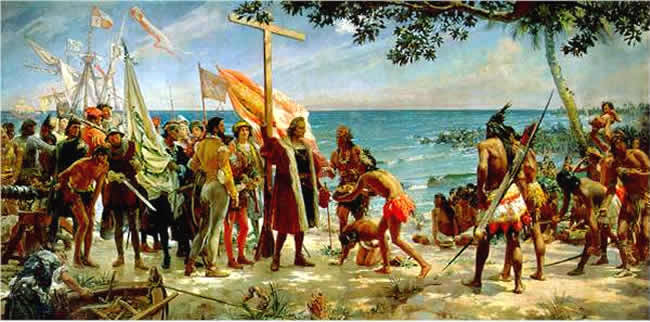The Taíno civilization indigenous to the Greater Antilles-Caribbean Sea (Hispaniola) flourished in the islands including Cuba, Hispaniola (Haiti and the Dominican Republic), Jamaica and Puerto Rico before and during the time when Christopher Columbus landed on the beaches of the New World in 1492.
On December 6th, 1492 Christopher Columbus landed at Mole St. Nicholas in Haiti’s north. Thus began a totally new phase of life on the island of Hispaniola. Most people are aware that Christopher Columbus landed at San Salvador on October 12th, 1492, thus discovering the New World for Spain. Less known is that his second land fall was at Mole St. Nicholas, Haiti on December 1492, or that the first settlement in the New World was La Navidad, on Haiti’s north coast. This settlement, which housed sailors from the Santa Maria which sank off Haiti’s coast, was founded on December 24th, 1492.

Columbus did not discover a lost or unknown land. There was a flourishing civilization of native Americans. The primary group was the Arawak/Taíno Indians. Arawak is the general group to which they belong, and describes especially the common language which this group of native Americans shared. They ranged from Venezuela through the Caribbean and Central America all the way to Florida. However, the particular group of Arawak-speaking people who lived on the island of Hispaniola were the Taíno Indians.
Through archeological excavation much has been learned about the Taíno as well as documentation from Fray Ramón Pané. Fray Pané was appointed by Columbus to record the Taino customs. Living amongst the Taíno, Fray Pané learning their language, religion and worship of the zemi gods as well as Taino music, and culture.
Some Pre-Columbian historians consider the Taíno as Arawaks because they spoke Arawakan and had originally traveled to the Caribbean from the Amazon Basin in the North Eastern part of South America during the 6th century.
The Taíno society was basically a gentle culture - in fact the word “Taíno” means Good and Noble. Their society was characterized by happiness, friendliness and a paternal, highly organized hierarchy.
